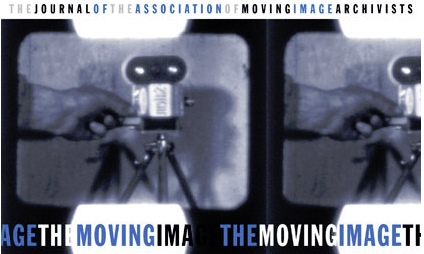

Guest Editors: Dan Erdman, Adam Charles Hart, Helena Shaskevich
Proposal deadline: March 31, 2026
“Videotape is NOT an archival medium,” influential documentary filmmaker George Stoney provocatively announced in 1998. Videotape is, as Stoney knew, an extraordinarily fragile medium – easily damaged through handling but also in danger of natural deterioration after only a few years. Further, there’s no possibility for videotape “restoration” in the manner of celluloid film; once magnetic media is damaged, that information is lost. That’s why, Stoney asserted, the work of archivists and scholars is so important -without active study and intervention, the work of videomakers is in perpetual danger of being lost forever.
The “videotape era” began in the late 1960s with the introduction of the Sony Portapak. Tape was more affordable than film, and re-useable, and the equipment was easy to learn. The next decade saw a remarkable wave of independent and community-based productions – journalism, documentary, artist tapes, activist videos incorporated into political actions, home movies. As video technology advanced into new formats that were smaller, cheaper, and more portable, videotape grew increasingly accessible to the general public, putting the creative and documentary tools of media into the hands of more people around the world.
However, each technological advance also put the previous generation of tapes in danger of being stranded. As one tape format supplanted another in market share – as VHS did to Betamax in the consumer realm, as the various Betacam formats did to U-matic tapes in the world of professional production, and as tapes compatible with digital capture did to all analog formats across all types of production – the older formats would cease to be manufactured, as were the playback decks necessary to view them. Even as video grew increasingly common and essential to both commercial and non-commercial media, each newly adopted format was, paradoxically, more fragile and less durable than the one that came before.
By 2010, Sony and the other major camera manufacturers ceased production on their DVCPro HD Camcorders, ushering in the beginning of the end of the videotape era that the Portapak had inaugurated four decades earlier. In that time, countless videomakers – amateur and professional – produced an unprecedented amount of audiovisual media. Some of it was notable in traditional terms – acclaimed reporting and documentaries, influential video art, successful fiction features – but the vast majority of it was not. Archivists and scholars were left with a major task: how do we preserve, sort, and study this unimaginable wave of media, all of which is rapidly deteriorating?
Broadly, media scholarship has focused on film – the traditional formats of narrative features and of many of the most influential artists of avant-garde and documentary. Much has been written about video art and about work that was shot on videotape, but videotape as a format has been comparatively little-studied. The challenges of preservation and scholarship, the complications of access and distribution, the quixotic ambition to save 40+ years of obsolete media before it disappears… the peculiarities of videotape archives are little known and rarely discussed outside of a relatively small network of video archivists.
This special issue will articulate the unique logistical, technological, and legal challenges of videotape preservation while introducing The Moving Image’s readership to the idiosyncratic character of videotape archives and the history of videotape as a medium.
NOTE: The editors ask that submissions focus on videotape, from open-reel formats to DV.
Themes include (but are not limited to):
Please send initial proposals and final submissions to special issue co-editor Adam Charles Hart at adam@mediaburn.org and CC journal editor Devin Orgeron at editor@themovingimage.org. We encourage potential writers to contact the editors in advance of submission. We are happy to work with and to help develop article ideas!
All manuscripts should be submitted as a Microsoft Word e-mail attachment, double-spaced throughout, using 12-point type with 1-inch margins, following the 17th edition of the Chicago Manual of Style. The deadline for proposals is March 31, 2026.
Please note if your piece should be considered for the Features, Forum, Collections, or Reviews sections. If you have an idea for a submission but are not sure as to which section would be the best for your work, the guest editor would be glad to discuss this during the planning stages.